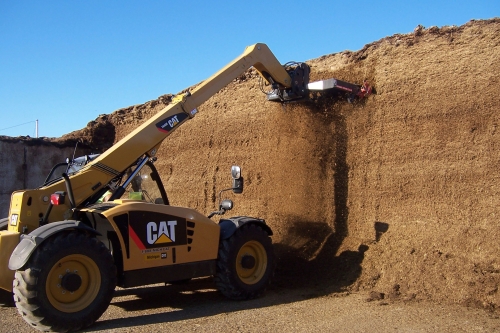 Silos full? With the recently-ensiled corn crop they should be as full as they are all year. Do you know what’s in each silo, and if so, is it written down? This is especially important if you grew both BMR and conventional corn for silage, or if some fields were affected by disease, drought or some other problem. It’s not good enough that you know where everything is, since unforeseen events (accident, sickness, etc.) could result in someone else needing to know what’s stored where. “If you don’t know where it is you don’t own it.” That’s not quite true with silage, but you get the idea.
Silos full? With the recently-ensiled corn crop they should be as full as they are all year. Do you know what’s in each silo, and if so, is it written down? This is especially important if you grew both BMR and conventional corn for silage, or if some fields were affected by disease, drought or some other problem. It’s not good enough that you know where everything is, since unforeseen events (accident, sickness, etc.) could result in someone else needing to know what’s stored where. “If you don’t know where it is you don’t own it.” That’s not quite true with silage, but you get the idea.
If you ensiled your corn crop in two or more silos, note which fields (and therefore which hybrids) went into each silo. That way if your herd production takes a bounce or a dip you might be able to relate it to a change in forage quality — and perhaps to the hybrid(s) represented in the silage you’re currently feeding. Obviously, this is trickier in bunker silos or driveover piles than in tower silos or silage bags. One of the advantages of silage bags is that as you fill the bag you can mark the location of each field’s crop on the plastic. As you feed out you can match the forage analysis to the specific hybrid. If you plant all conventional corn hybrids you might find more quality differences associated with % dry matter than with the genetics of the hybrid.
Source: Miner Institute’s Farm Report.









